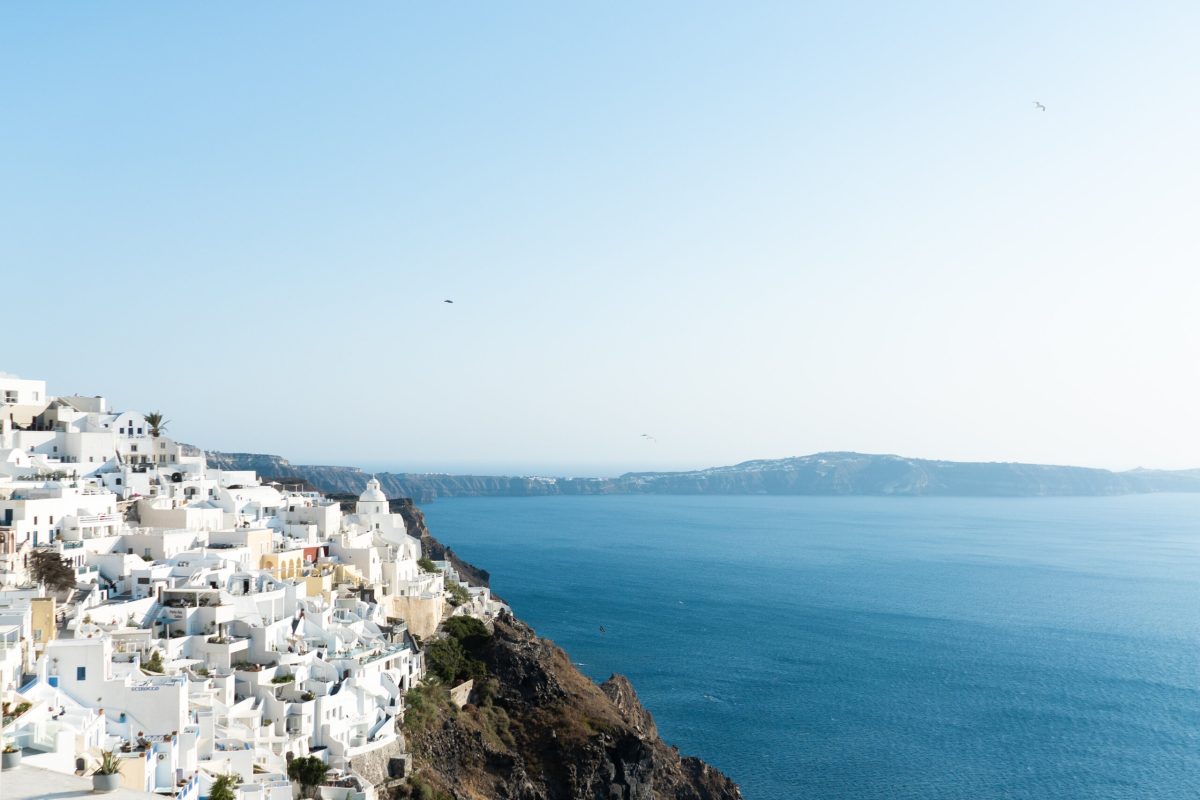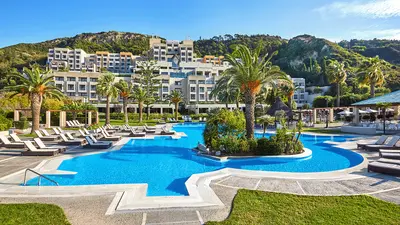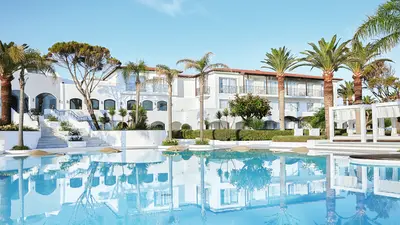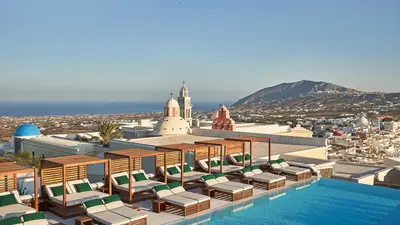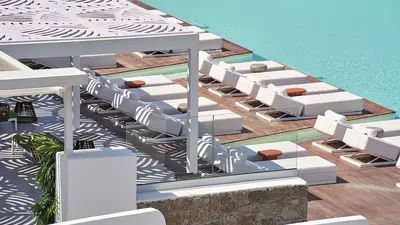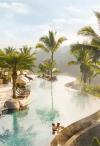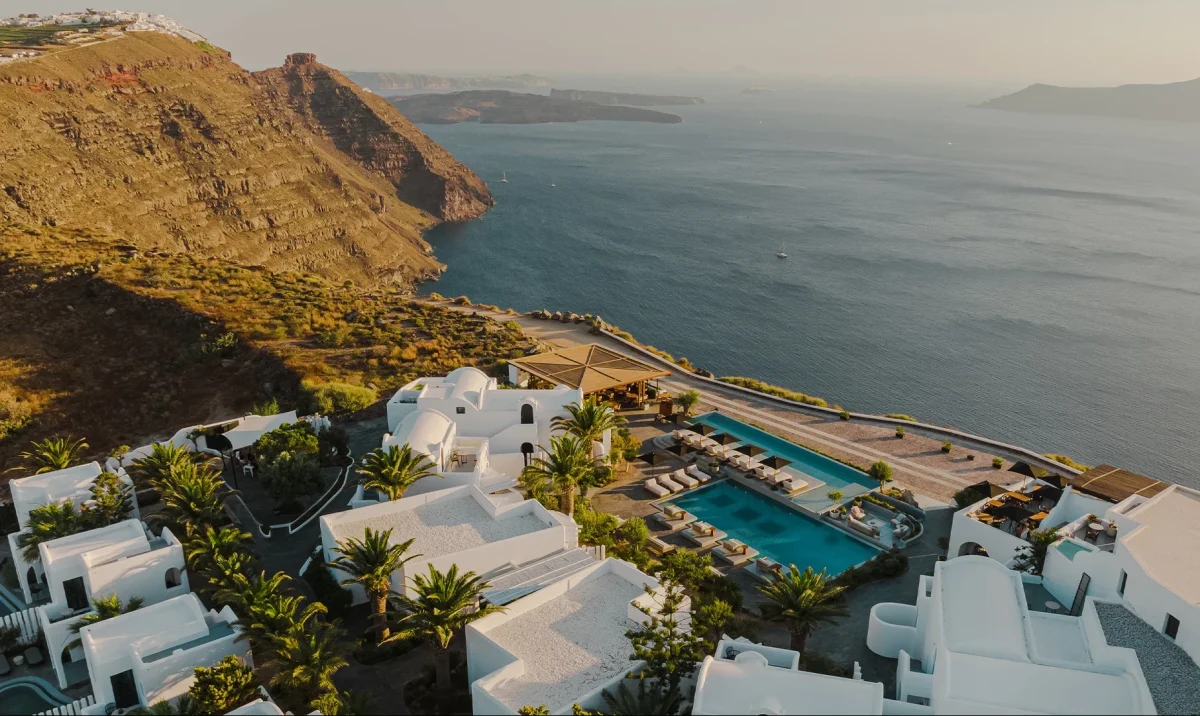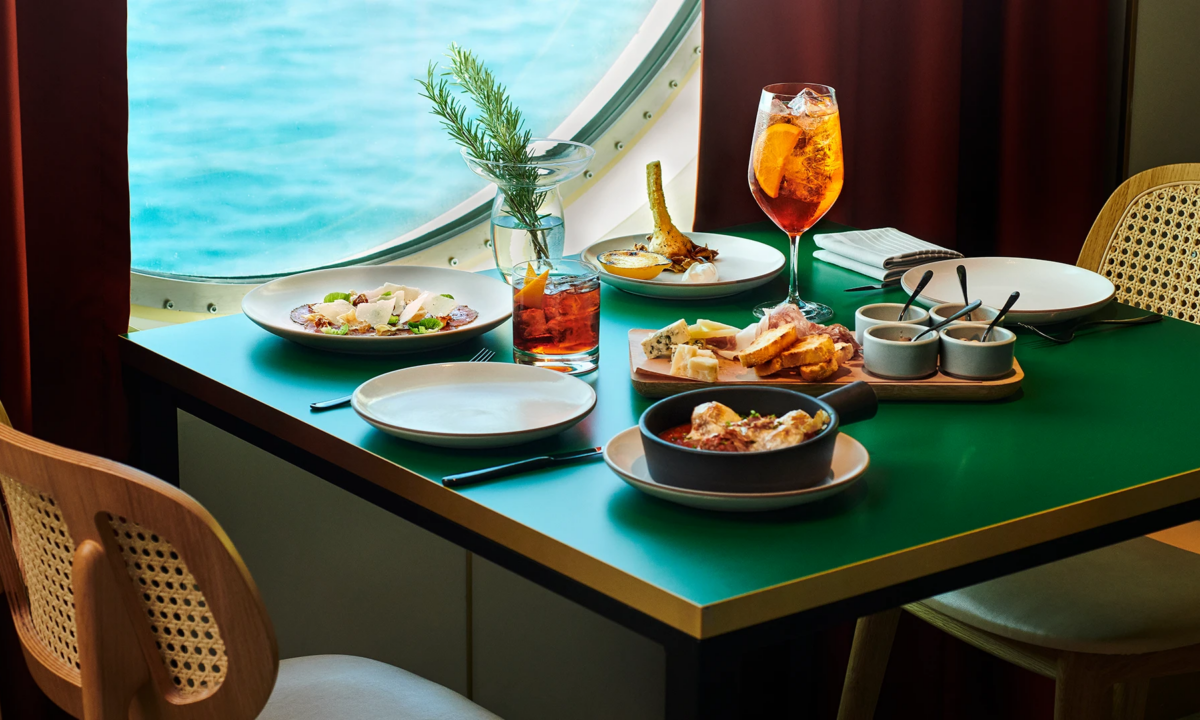Have the moonscapes of Milos or the seas around Santorini all to yourself. Flip Byrnes shares the ultimate Greek Islands experiences far from the touristy crowds.
If there’s one experience to splurge on when you visit Santorini, it’s a private charter with Renieris Santorini Sailing Centre. My captain, Eleftherios, explains the history of the island as we pass Akrotiri Lighthouse, Red Beach and nose onto a private mooring at volcanic Nea Kameni island.
The caldera may seem calm, but the islands of Santorini have not been silenced completely. Nea Kameni remains a live volcanic site (it has been dormant since 1950, having erupted eight times in 1900 years) and these islands continue to be pushed slowly out of the sea by the volcanic pressure below.

A day on the water is a day where time pauses. There are no crowds here, ever, just the sizzle of fresh fish as sailor Petros barbeques on the catamaran’s aft.
If we were more time rich, we’d continue to Thirasia, so far east of the tourist track most don’t even know it exists. It’s also tempting to drop anchor in Santorini, permanently, but instead we heed Poseidon’s call and continue our sea odyssey to Milos. A two-hour sail west is Greece’s latest “it” island, a geological gem with supernatural rock forms and abandoned mines. This Cycladic island hasn’t hit the tourist heights of Santorini or Mykonis (yet), but was hurled into the publicity stratosphere when British Vogue started shooting here and Justin Bieber splashed down in 2021.

There is nowhere quite as exotic as Milos, with colours ranging from ochre and blazing white to emerald waters and magma sunsets. And it has what Santorini doesn’t, stunning beaches: including the egg-shell-white moonscape of Sarakiniko (a mix of volcanic ash, sandstone and pumice) frozen into sea stacks, arches and caverns; Tsigrado beach (accessed by a rickety Flintstones-style ladder), and geothermal Paleochori where tavernas, like my favourite find Sirocco, offer stews cooked in clay pots buried in the sand overnight.
The fishing villages of Mandrakia and Klima are a delight. Brightly painted traditional houses known as syrmatas line the ancient tiny ports. The different colours of the houses act as homing beacons to the returning fishermen. On a sun-soaked afternoon you might see local boys diving from the quay in Mandrakia into the Aegean Sea, right next door to the sole restaurant Medusa (one of the island’s best) that serves fish straight from the fishermen’s baskets.
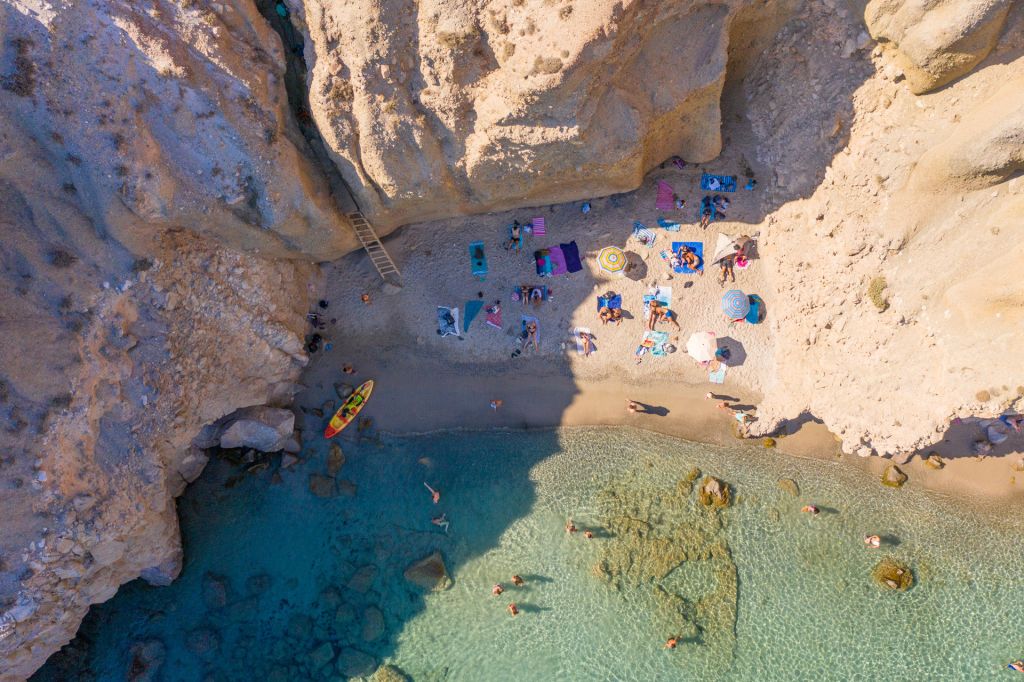
We set sail again to south coast gems you can only access by boat. Every cove is more thrilling than the last, culminating in a minuscule cavern with white-sand bottom, black lava underwater walls and a turquoise that needs to be seen to be believed. This cove, one of my Greek Island highlights, has no name and can only be found by using a local skipper.
In contrast is Paliorema Sulfur Mine, an abandoned oceanside quarry complete with rusted, iron rail tracks, stone buildings and leftover mounds of sulfur. It’s eerie but a tangible reminder of Milos’ history.
There’s one thing you won’t see in Milos, the marble Venus de Milo, now ensconced in the Louvre, that was found here in 1820. But who needs Venus when you have a volcanic wonderland?
This is an abridged version of the original article. Read the rest of this article on page 85 in the first issue of Dream by Luxury Escapes magazine. Get your copy here or see the digital edition here.
Hero image: Oia, Santorini. Courtesy of Marketing Greece.


